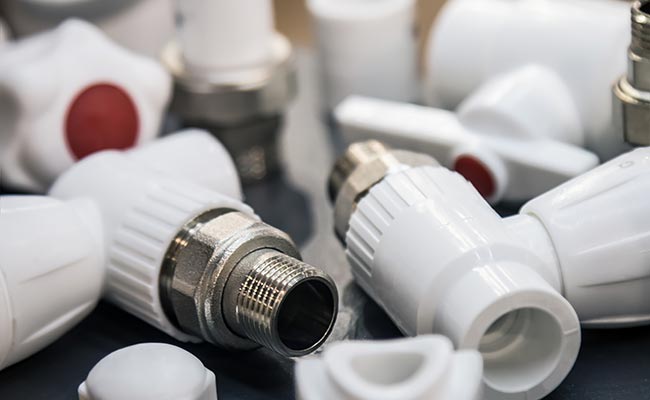A true union ball valve is a three-part valve with threaded union nuts. This design allows you to remove the entire central valve body for service or replacement without ever having to cut the pipe.
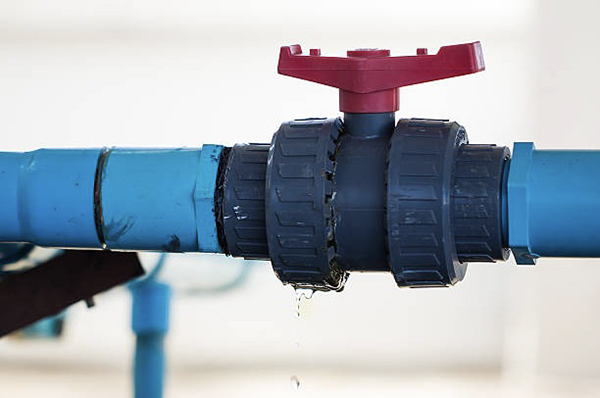
This is one of my favorite products to explain to partners like Budi in Indonesia. The true union ball valve isn’t just a component; it’s a problem-solver. For any of his customers in industrial processing, water treatment, or aquaculture, downtime is the biggest enemy. The ability to perform maintenance in minutes, not hours, is a powerful advantage. Understanding and selling this feature is a clear path to creating a win-win situation where his customers save money and see him as an indispensable expert.
What is the difference between a union ball valve and a ball valve?
You see a standard 2-piece valve and a true union valve. They both stop water, but one costs more. You wonder if the extra cost is worth it for your project.
The key difference is in-line maintenance. A standard ball valve is a permanent fixture, while a true union ball valve’s body can be removed from the pipeline for repair after installation.
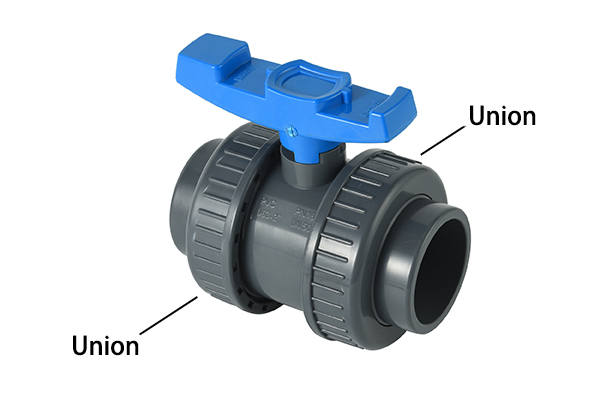
This question gets to the core value proposition. While both are types of ball valves, how they connect to the system changes everything about their long-term use. A standard ball valve, whether 1-piece or 2-piece, is connected directly to the pipe. Once it’s glued or threaded in, it’s part of the pipe. The true union design is different. It acts more like a removable component. For Budi’s customers, the choice comes down to one question: How much is downtime worth?
Let’s break it down:
| Feature | Standard Ball Valve (1-pc/2-pc) | True Union Ball Valve |
|---|---|---|
| Installation | Glued or threaded directly into the pipe. The valve is now permanent. | Tailpieces are glued/threaded. The valve body is then secured with union nuts. |
| Maintenance | If internal seals fail, the entire valve must be cut out and replaced. | Simply unscrew the union nuts and lift the valve body out for repair or replacement. |
| Cost | Lower initial purchase price. | Higher initial purchase price. |
| Long-Term Value | Low. Higher labor costs for any future repairs. | High. Drastically lower labor costs and system downtime for repairs. |
How does a union ball valve work?
You see the two large nuts on the valve but don’t understand the mechanism. This makes it hard to explain the benefit to your customers, who just see a more expensive valve.
It works using a three-part system: two tailpieces that connect to the pipe and a central body. The union nuts screw onto the tailpieces, clamping the body securely in place with O-rings.
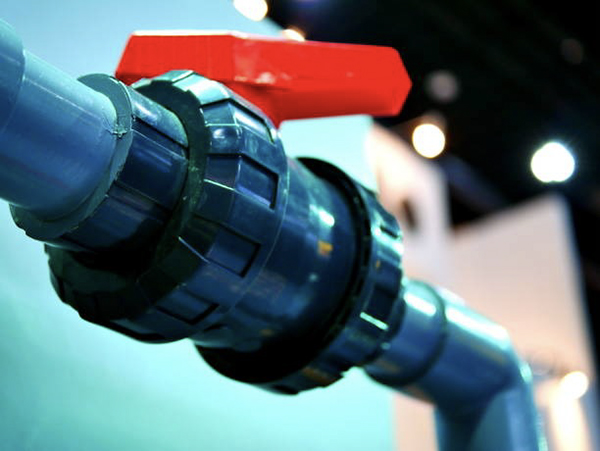
The design is brilliant in its simplicity. I often take one apart to show Budi how the pieces fit together. Understanding the mechanics makes its value instantly clear.
The Components
- Central Body: This is the main part containing the ball, stem, and handle. It does the actual work of controlling the flow.
- Tailpieces: These are the two ends that are permanently solvent-welded (glued) or threaded onto the pipes. They have flanges and grooves for O-rings.
- Union Nuts: These are the large, threaded nuts. They slide over the tailpieces.
- O-Rings: These rubber rings sit between the central body and the tailpieces, creating a perfect, watertight seal when compressed.
To install it, you glue the tailpieces onto the pipe. Then, you place the central body between them and simply tighten the two union nuts by hand. The nuts press the body against the O-rings, creating a secure, leak-proof seal. To remove it, you just reverse the process.
What is the purpose of trunnion in a ball valve?
You hear the term “trunnion mounted” and think it is related to “true union.” This confusion is dangerous because they are completely different features for very different applications.
A trunnion has nothing to do with a union. A trunnion is an internal pin that supports the ball from the top and bottom, used in very large, high-pressure valves, not typical PVC valves.
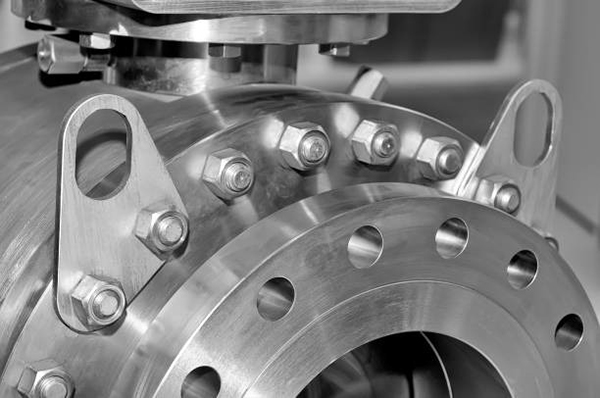
This is a critical point of clarification I provide for all our partners. Confusing these terms could lead to major specification errors. “Union” refers to the external connection type, while “trunnion” refers to the internal ball support mechanism.
| Term | True Union | Trunnion |
|---|---|---|
| Purpose | Allows for easy removal of the valve body from the pipeline for maintenance. | Provides mechanical support for the ball against very high pressure. |
| Location | External. The two large nuts on the outside of the valve. | Internal. Pins or shafts holding the ball in place inside the valve body. |
| Common Use | All sizes of PVC valves, especially where maintenance is expected. | Large diameter (e.g., > 6 inches) and high-pressure metal valves. |
| Relevance | Extremely relevant and common for PVC systems. A key selling feature. | Almost never used in standard PVC ball valve systems. |
Most PVC ball valves, including our Pntek models, use a “floating ball” design where pressure pushes the ball into the downstream seat. A trunnion is for extreme applications far beyond typical water management.
What is a union valve?
You hear a contractor ask for a “union valve” and you assume they must mean a ball valve. Making an assumption could mean ordering the wrong product if they needed a different function.
“Union valve” is a general term for any valve that uses union connections for in-line removal. While the most common type is the True Union Ball Valve, other types exist, like True Union Check Valves.
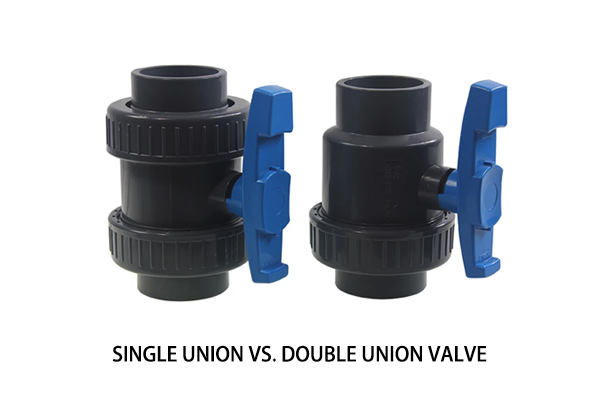
The word “union” describes the connection style, not the valve’s function. The valve’s function is determined by its internal mechanism—a ball for on/off control, a check mechanism to prevent backflow, and so on. At Pntek, we also manufacture True Union Check Valves. They offer the exact same benefit as our true union ball valves: easy removal and maintanence. If a check valve needs to be cleaned or a spring replaced, you can remove the body without cutting the pipe. When a customer asks Budi’s team for a “union valve,” it’s a great opportunity to demonstrate expertise by asking a simple follow-up question: “Great. Do you need a union ball valve for on/off control, or a union check valve to prevent backflow?” This clarifies the order and builds trust.
Conclusion
A true union ball valve allows valve body removal without cutting pipe. This key feature saves immense time, labor, and money on any system
Post time: Aug-26-2025



